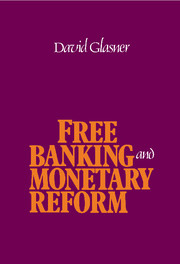1 - The evolution of money and banking
Published online by Cambridge University Press: 16 September 2009
Summary
One of the chief things which monetary theory ought to explain is the evolution of money. If we can reduce the main lines of that evolution to a logical pattern, we shall not only have thrown light upon history, we shall have deepened our understanding of money, even modern money, itself.
J. R. Hicks, A Theory of Economic HistoryMoney – general purchasing power over goods – is surely among the most remarkable products of human civilization. Without it, the incredibly complex division of labor that provides us with the highest standard of living in human history would be unthinkable. I propose in this book to make the workings of the increasingly sophisticated and complex monetary system that is an integral part of our modern economy somewhat more comprehensible. That task can be made a bit less daunting if we follow J. R. Hicks's advice and begin by trying to understand the forces that determined the early evolution of money and banking. Once we understand those forces, we shall have gone a long way toward understanding more recent monetary developments.
From the earliest times, thinkers have been perplexed by this peculiar artifact of civilization. Although no one doubts the usefulness of money, why people began using money in the first instance is not at all obvious.
- Type
- Chapter
- Information
- Free Banking and Monetary Reform , pp. 3 - 26Publisher: Cambridge University PressPrint publication year: 1989



